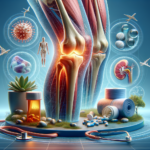Understanding the Causes of Knee Pain
Knee pain is a common ailment that affects individuals of all ages. It can stem from a variety of causes, ranging from acute injuries to chronic conditions. Understanding the root cause of knee pain is crucial in determining the most effective treatment. Common causes include osteoarthritis, rheumatoid arthritis, ligament injuries, and meniscus tears. Osteoarthritis, the most prevalent form, results from the gradual wear and tear of cartilage, leading to pain and stiffness. Rheumatoid arthritis, an autoimmune disorder, causes inflammation of the knee joints, resulting in pain and swelling.
Injuries such as ligament tears, often seen in athletes, can lead to significant knee pain. The anterior cruciate ligament (ACL) is particularly susceptible to injury during high-impact sports. Meniscus tears, caused by sudden twisting motions, are another frequent source of discomfort. Beyond these, conditions like bursitis and patellar tendinitis can also contribute to knee pain, highlighting the need for accurate diagnosis.
Understanding these causes helps in tailoring treatment plans that address the specific needs of the patient. For instance, while osteoarthritis might benefit from weight management and physical therapy, a ligament tear might require surgical intervention. Thus, a comprehensive understanding of the underlying cause is the first step towards effective knee pain management.
Conventional Treatment Options for Knee Pain
Conventional treatments for knee pain often focus on managing symptoms and improving function. These treatments include medication, physical therapy, and in some cases, surgery. Non-steroidal anti-inflammatory drugs (NSAIDs) are commonly prescribed to reduce inflammation and alleviate pain. For more severe pain, corticosteroid injections may be administered directly into the knee joint.
Physical therapy plays a pivotal role in conventional treatment, aiming to strengthen the muscles around the knee, improve flexibility, and enhance joint function. A tailored exercise regimen can significantly reduce pain and improve mobility. In cases where conservative treatments do not provide relief, surgical options such as arthroscopy or knee replacement may be considered. Arthroscopy involves a minimally invasive procedure to repair damaged tissues, while knee replacement involves replacing the damaged knee joint with an artificial one.
While these treatments can be effective, they may not be suitable for everyone. Factors such as age, overall health, and the severity of the condition influence the choice of treatment. Therefore, patients must work closely with healthcare providers to determine the most appropriate course of action.
Exploring Alternative and Complementary Therapies
Beyond conventional treatments, many individuals seek alternative and complementary therapies to manage knee pain. These approaches focus on holistic healing and often emphasize lifestyle changes. Acupuncture, an ancient practice from traditional Chinese medicine, involves inserting thin needles into specific points on the body to alleviate pain and promote healing. Studies have shown that acupuncture can be effective in reducing knee pain, particularly in cases of osteoarthritis.
Chiropractic care is another popular alternative therapy, focusing on spinal alignment to improve overall body function. By ensuring proper alignment, chiropractic adjustments can help reduce knee pain and improve mobility. Additionally, dietary supplements like glucosamine and chondroitin are often used to support joint health. These supplements are believed to aid in the repair of cartilage and reduce inflammation.
Mind-body practices such as yoga and tai chi can also be beneficial. These practices not only enhance physical strength and flexibility but also promote mental well-being, which is crucial in managing chronic pain. Engaging in these activities can provide individuals with a sense of control over their condition and improve their quality of life. While alternative therapies may not replace conventional treatments, they can serve as valuable adjuncts, offering a comprehensive approach to knee pain management.








